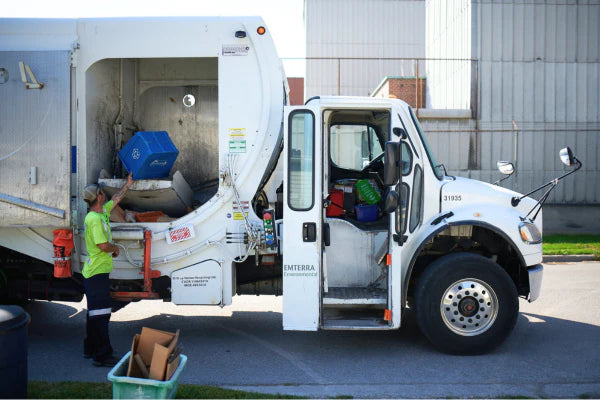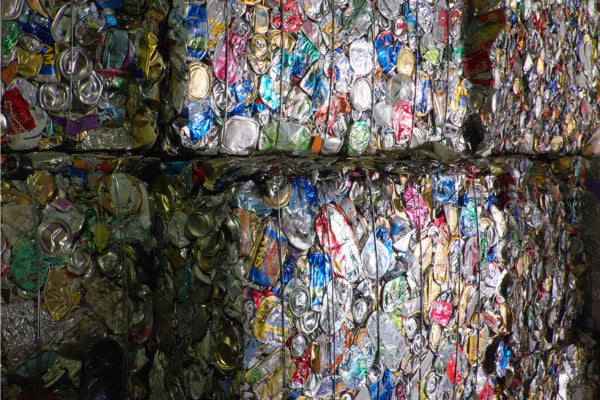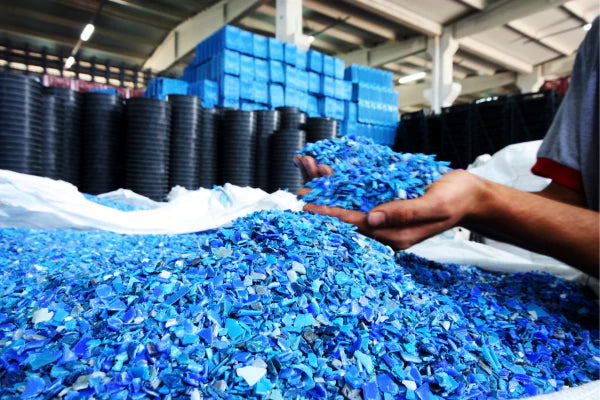Blue Box Recycling in Ontario
How to Recycle Blue Box Materials
The Recycling Process Explained
From blue box collections in Ontario

Curbside Pick-up
Collection and Sorting
- Residents place recyclable materials (such as paper, cardboard, aluminum cans, steel cans, plastic containers, and glass) into their blue boxes.
- Depending on where you live you might have one bin for all recyclable or two bins - one for "containers" made from plastic, glass or metal and one for "fibres" like paper and cardboard
- These blue boxes are collected by waste management services and transported to Material Recovery Facilities (MRFs).
- At the MRFs, the recyclables are sorted into various material types using conveyor belts, screens, and manual labor. The goal is to separate different materials effectively.

Once sorted, the materials are grouped together
Material Separation
- Paper and Cardboard: These are baled and sent to paper mills for recycling.
- Aluminum and Steel Cans: These are compacted and shipped to metal recycling facilities.
- Plastic Containers: Sorted by resin type (e.g., PET, HDPE), they are prepared for recycling.
- Glass: Separated by color (clear, green, brown), glass is crushed and used in new glass products.

Each material type undergoes specific processing
Processing and Reuse
- Paper and Cardboard: Pulped, cleaned, and turned into new paper products.
- Aluminum and Steel Cans: Melted down and used to create new cans or other metal products.
- Plastic Containers: Shredded, melted, and formed into pellets for manufacturing new plastic items.
- Glass: Crushed and mixed with raw materials to produce new glass containers.
Frequently Asked Questions
The blue box in Ontario is for recycling materials like glass bottles, paper, cardboard, and specific plastic containers. Ensure items are clean and dry before placing them in the box.
To recycle glass in Ontario, place clean glass bottles and jars in your blue box. Avoid including broken glass or non-recyclable items, as they can contaminate the recycling stream.
In Ontario, you can recycle certain plastic containers marked with recycling symbols 1 through 7. This includes items like milk jugs, detergent bottles, and yogurt containers, provided they are clean and dry.




